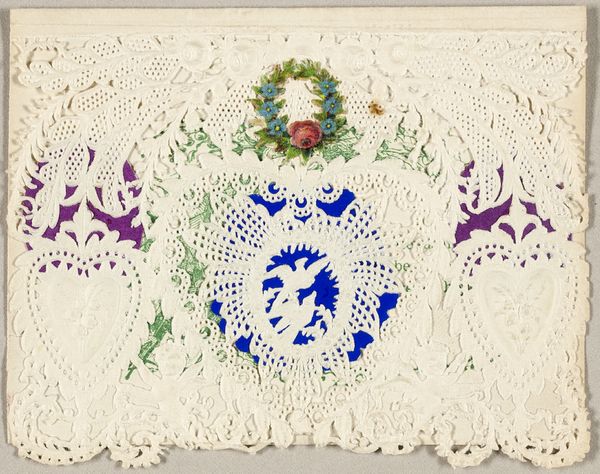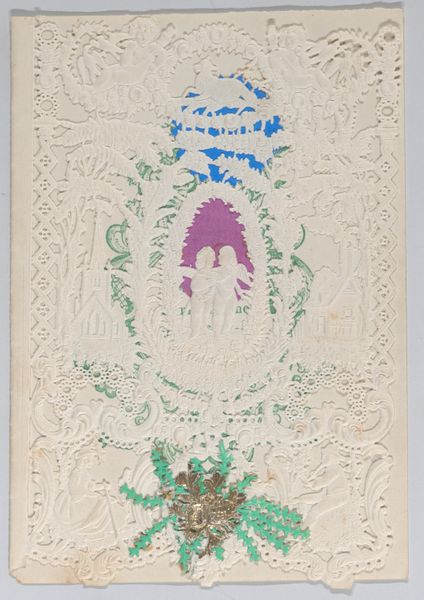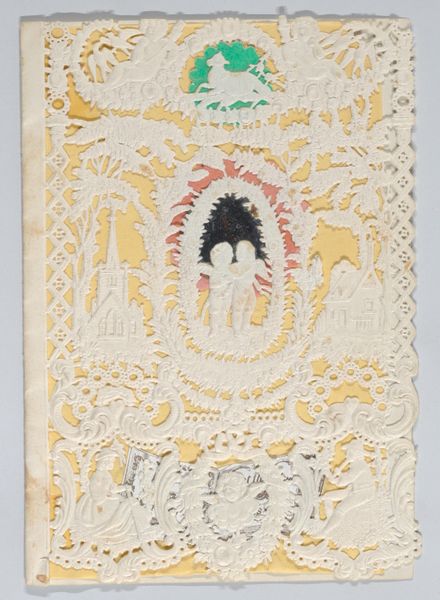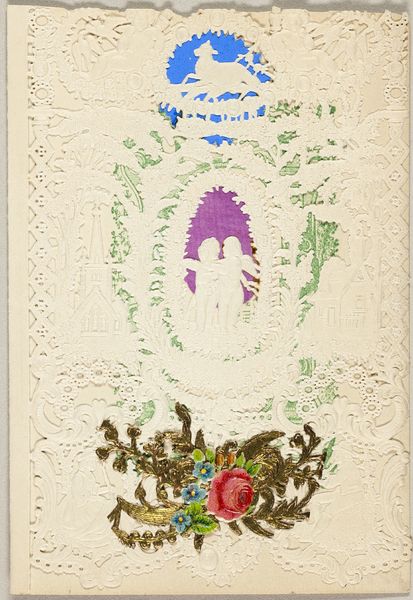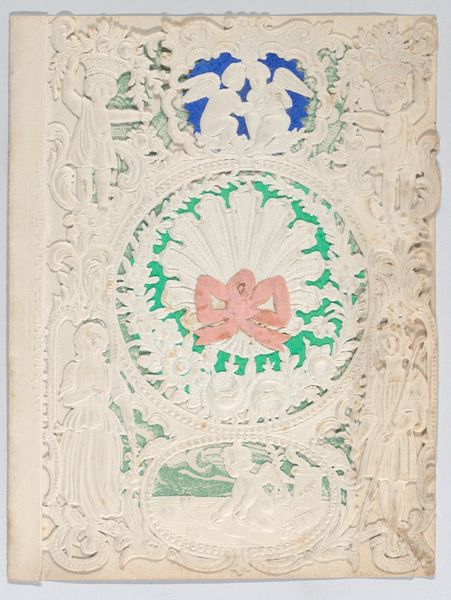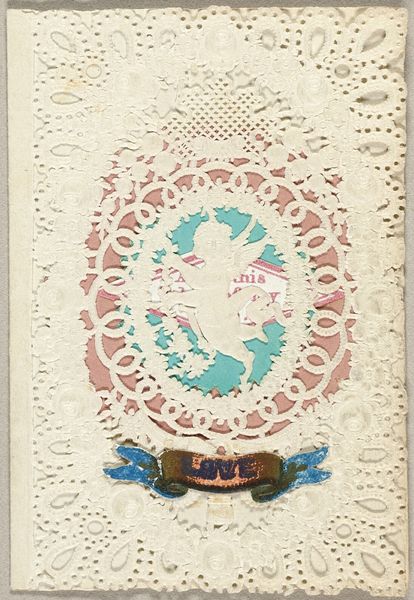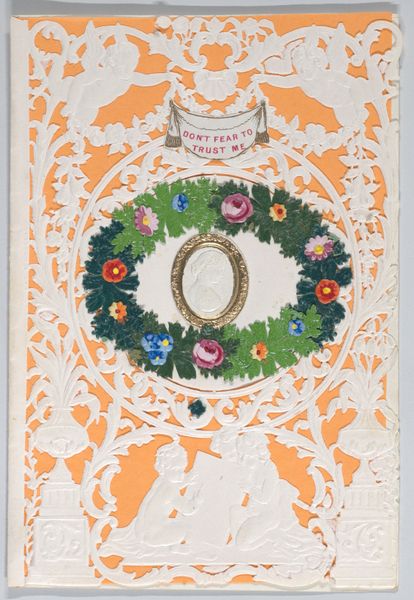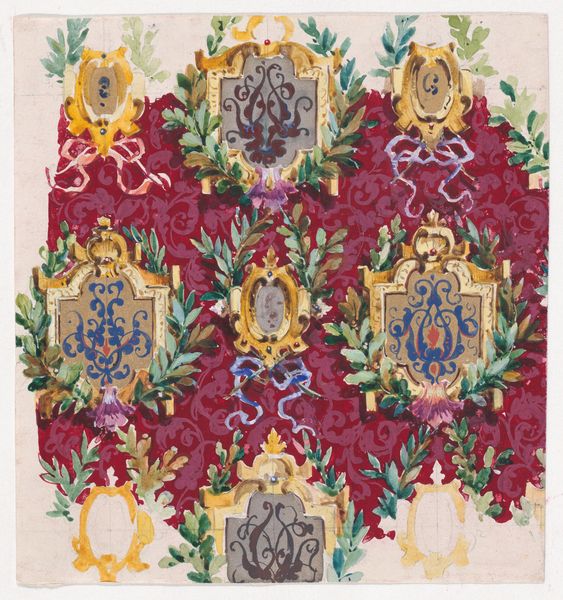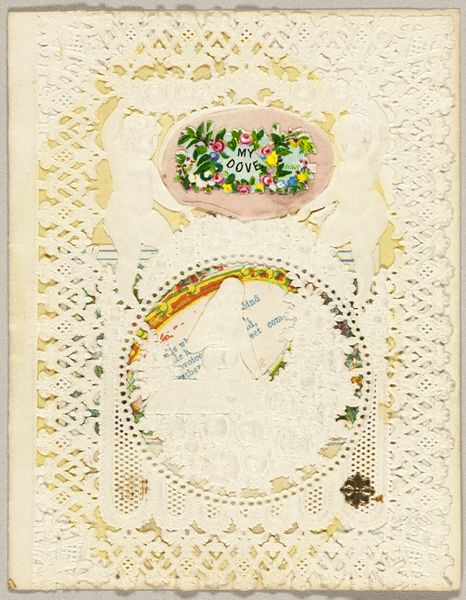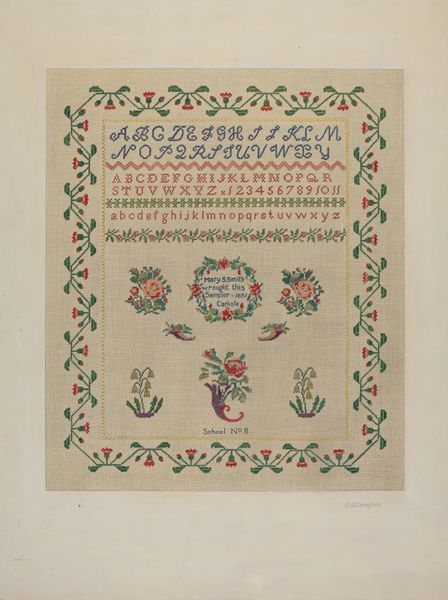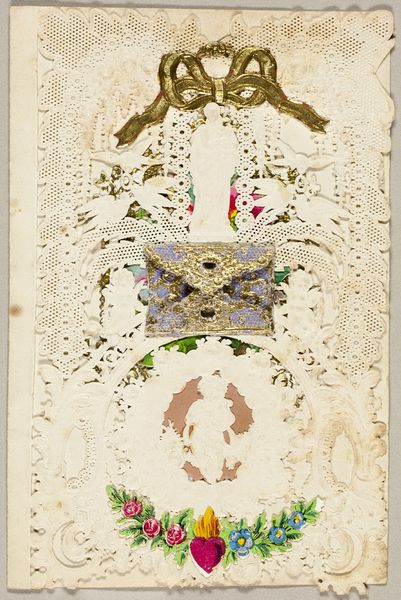
Dimensions: Width: 3 1/16 in. (7.8 cm) Length: 3 3/4 in. (9.6 cm)
Copyright: Public Domain
This intricate Valentine card was made with paper, watercolor, and seed embroidery by an anonymous artist. Cards like this one reflect shifting social norms around courtship and gender in the 19th century. In the Victorian era, the rise of a consumer culture and the Industrial Revolution allowed for mass production, including sentimental keepsakes such as Valentine's Day cards. These cards were part of elaborate rituals of courtship. The exchange of valentines provided a socially acceptable way for individuals to express romantic interest, at a time when there were strict codes of conduct. The imagery of hearts, flowers, and lace—all present here—became symbolic of romantic love. The card’s inscription reading ‘Constancy’ speaks to the era’s emphasis on commitment. The production of these cards also highlights gendered divisions of labor. Women, often confined to the domestic sphere, found opportunities for artistic expression through the creation and exchange of these valentines. To understand this artifact fully, we might research Victorian courtship rituals, the history of Valentine's Day, and the role of women in the decorative arts. By studying social and institutional contexts, we can discover the complex meanings embedded in this seemingly simple token of affection.
Comments
No comments
Be the first to comment and join the conversation on the ultimate creative platform.
